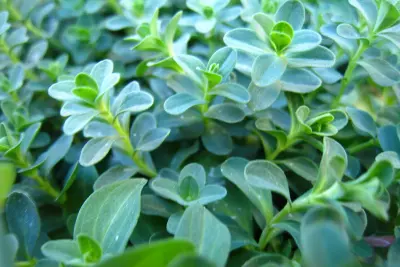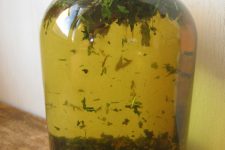Different parts of medicinal plants are used to treat a variety of ailments.
Most of us usually only think of harvesting the aerial parts of the plant — leaves, buds, and flowers. And for the beginner, this is a great place to start.
It matters not if you are buying, growing-your-own, or finding them in the wild, the herb’s overall quality largely depends on when it was harvested.
Harvesting
Here are a few guidelines for harvesting medicinal herbs that I have picked up through my experiences and reading.
1. Roots and Barks. Plant material such as Echinacea Root, Burdock Root, Valerian Root, and Willow Bark are all best to harvest either in the fall or spring. It is during this time — when the plant is dormant — that the majority of the plant’s healing properties reside in the root.
2. Leaves and Tops. This is what most of us are familiar with when we talk about “harvesting herbs” — think of the Mints, Lemon Balm, Sage, and Catnip. Just as with the herbs we commonly use when cooking, the leaves of medicinal herbs are very easy to harvest. Generally speaking, leaves are best harvested before and right up until the plant is in full bloom. This means making several cuttings in the spring and summer prior to flowering (next post we’ll talk about how to preserve medicinal herbs). A trust me on this, the bounty that can come from one plant over the course of a season may be plenty to meet a need for your family. I say this to encourage you…don’t let space prevent you from growing and experiencing the joy of the harvest!
3. Flowers and Blossoms. The flowers of St. John’s Wort, Calendula, Red Clover, and Yarrow, just to name a few, are bursting with energy and ready for harvest just as they start to bloom. In most cases, harvesting these medicinal flowers frequently allows the plant to continue to produce.
4. Berries and Fruits. For example, Elderberries, Hawthorn Berries, and Vitex are each best to collect when they look full, juicy, and bright.
5. Let your senses guide you. Ultimately, I encourage you not to get too hung up on doing this “just right.” Learn to trust your senses. Taste the leaves and fruit. Look at them. Smell the plant. Does it all seem healthy, potent, and fresh? Then it’s probably ready for harvesting.
6. After the dew of the morning. The traditional time to harvest medicinal herbs is in the morning after the dew has gone. This reduces the amount of moisture on the plant material and should be completed prior to the heat of the sun carries away their vitality.
What are you harvesting? What harvests are you looking forward to?





 Creating a Kitchen Pharmacy: How to Wildcraft Herbs
Creating a Kitchen Pharmacy: How to Wildcraft Herbs
I made my first harvest ever yesterday… raspberry leaves and dandelions from my backyard. They’re drying now!
That.is.awesome.
Way to go Amanda!!! Aren’t you just loving it 🙂
Thinking of starting an herb garden. Never had one before, what is the best thing to start with?
GREAT question Toni! Ask 10 people that question and you’ll probably get 10 different answers 🙂 So I’ll tell you a few that I started with…lemon balm, calendula, peppermint, thyme, horehound, and feverfew. They are super easy to grow, they produce a lot, and can be used to treat almost any ailment.
Can anyone else recommend simple, easy to grow, multi-purpose herbs for Toni to start with?
I just started my first herb garden and am so excited! The camomile and lemon balm are coming in well, but the lavender isn’t. We didn’t have a cold snap here, it’s been in the 80s off and on since March. Will they come up if they didn’t have any cold prior to seeding? Thanks!
Nettles! love ’em all ways. Dandelion blossoms for wine & fritters.
*anna
Off topic, but, because out you, i stopped using shampoo, conditioner, and i made tooth paste. For the first time in nearly 30 years my acne has cleared up! Thank you for making a difference. Happy mothers day.
“..don’t let space prevent you from growing and experiencing the joy of the harvest!” <- Love it! I'm stuck in an apartment for the next 6 months, regardless, my patio is overflowing with as many potted plants as I can fit!!
LOVE.IT.